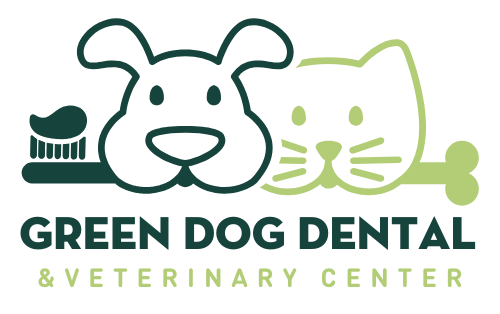What is an endoscopy?
An endoscopy is a procedure that allows veterinarians to investigate and look inside a part of the body with a camera.
Dr. Michael Geist
Green Dog Veterinary Center
When are endoscopies used?
An endoscopy is a minimally invasive technique that can be used to examine various cavities such as the nose, esophagus, stomach, small intestine, colon, ears, abdomen, bladder, or other parts of the urinary or genital tracts.
What problems can be diagnosed with a dog endoscopy?
It depends on the dog or cat’s problems. Dogs that need a gastrointestinal endoscopy have likely ingested a foreign object, such as toys, pacifiers, and coins, that needs to be removed. Other problems may involve chronic illnesses or pets that are vomiting frequently, experiencing weight loss, regurgitating, or having chronic diarrhea.
Why are endoscopies important?
Endoscopies offer a diagnostic solution for chronic issues when other tests have not provided answers. They allow veterinarians to obtain samples from the insides of the body without resorting to more invasive methods like surgery. In many cases, clients prefer minimally invasive options for themselves and their pets, such as endoscopy.
Do I need to take my dog to a specialist in order to get an endoscopy?
It is recommended that an endoscopic procedure is performed by a board-certified specialist to ensure the best results and minimize risks.
Will my dog need anesthesia to undergo an endoscopic exam?
General anesthesia is typically required for endoscopic procedures, not because they are painful, but because the patient needs to remain still during the examination. It is difficult to perform this procedure on an awake patient, and general anesthesia is used for human patients as well.
Is this a painful procedure for my pet?
While the procedure itself is not painful, anesthesia is used to ensure the patient's comfort while the scope is inserted into the various cavities being investigated.
How should I prepare my dog for an endoscopic procedure?
All patients should fast for 12 hours prior to undergoing general anesthesia for an endoscopic procedure. In cases where the endoscope is inserted into the stomach, the stomach must be empty.
Will my dog need any special treatment to recover from an endoscopic exam?
Most healthy or stable patients recover smoothly after an endoscopic procedure. However, some may require additional therapies based on the underlying reason for the procedure. For example, if the patient is experiencing vomiting, they may be treated with anti-nausea medication. Others may need new treatments depending on the findings from the endoscopy. Patients that have had a scope in their nose, bladder, or airways may need other therapies, but again, none of these procedures are painful, although they may require additional treatments for the underlying disease.
Are there any risks or side effects associated with these procedures?
There is a very low risk of the endoscope causing internal damage to the organ being examined. This risk is rare and will be discussed with the pet owner prior to the procedure. Overall, endoscopy is a safe and minimally invasive diagnostic tool.
Before these procedures happen, what sort of lab work or tests need to be done in order to have the endoscopy?
Pre-anesthetic screening includes a full blood panel assessing the patient's kidneys, liver, electrolytes, and red blood cell parameters within two months of scheduling the endoscopic procedure. Additional tests like abdominal ultrasound, x-rays, or CT scans may also be performed, depending on the location of the body being examined. For instance, a rhinoscopy is often accompanied by a CT scan.
How is my dog monitored during the procedure?
During the procedure, patients have their vital signs monitored, including blood pressure, EKG, heart rate, pulse oximetry (blood oxygenation), and body temperature.
How effective are dog endoscopies in providing diagnoses?
Endoscopies are highly effective in providing diagnoses as they allow veterinarians to visualize abnormalities within the body and obtain samples without surgery. This minimally invasive method can accurately diagnose conditions and guide treatment plans.
Are there any signs of complications after this procedure that I should be aware of?
Depending on the location of the endoscopy and whether a sample was collected, there may be minor bleeding or inflammation associated with the procedure. In such cases, medication may be prescribed to manage these symptoms.
Why would this procedure need to be repeated, if at all?
In some cases, the biopsy sample collected during the endoscopy may not be representative of the true disease, and a new sample may need to be collected. This decision is made based on the pathologist's examination of the sample.
Would there be any other diagnostic procedures recommended by a veterinarian after an endoscopy?
Additional testing or therapy may be recommended based on the results of the endoscopy and biopsy. Examples include further blood tests or special stains on the sample to better understand the underlying condition.
When will the veterinarian discuss the abnormalities or treatment plans for my dog?
After the endoscopic procedure, the veterinarian will meet with you to discuss the findings, including pictures and sometimes video, from the examination. If a biopsy was collected, the results from the pathologist typically take about five days and will be discussed once available.
If you still have other questions and you'd like to reach out to us, you can call us directly at (310) 606-2407, or you can email us at [email protected]. But please do reach out, and we'll get back to you as fast as we can. Don't forget to follow us on social media https://www.facebook.com/GreenDogDental/, https://www.instagram.com/greendogdentalvet/
